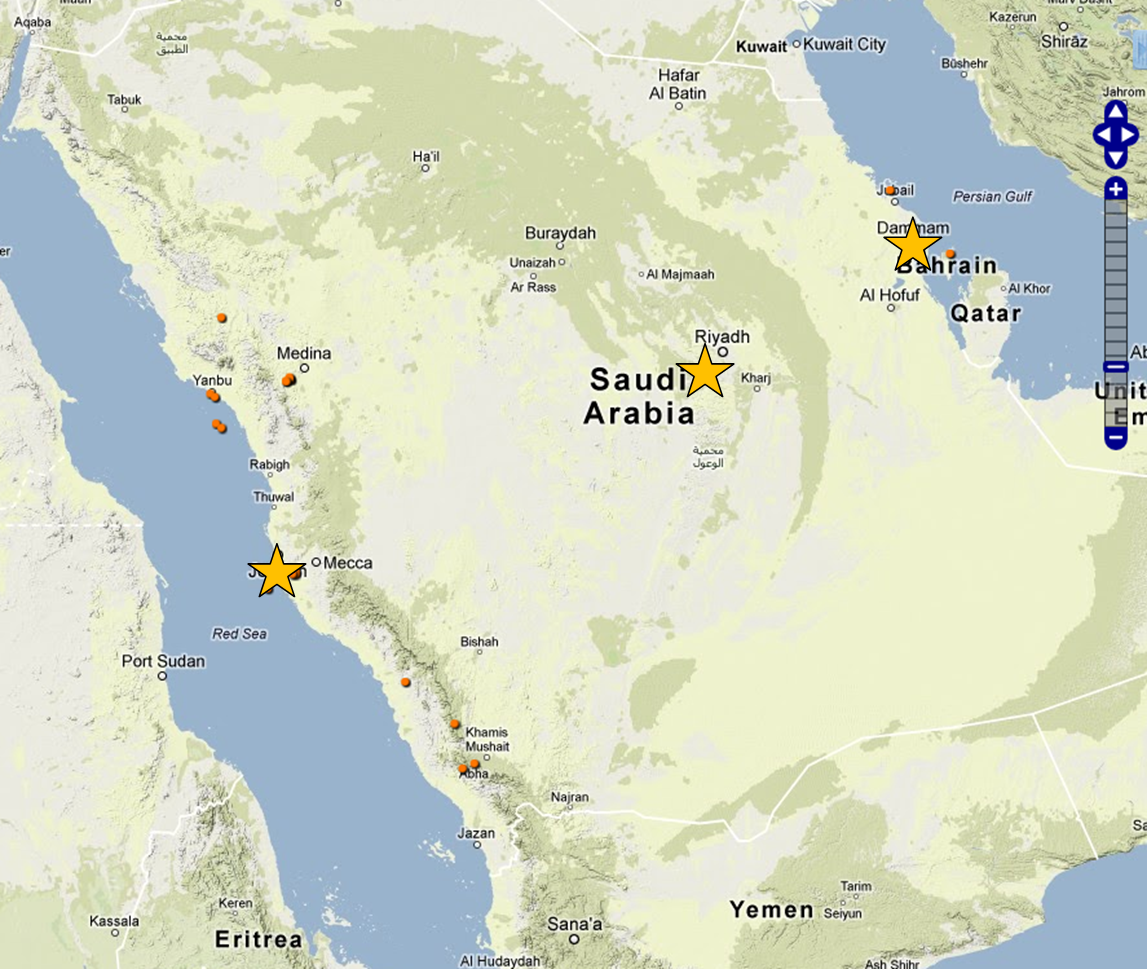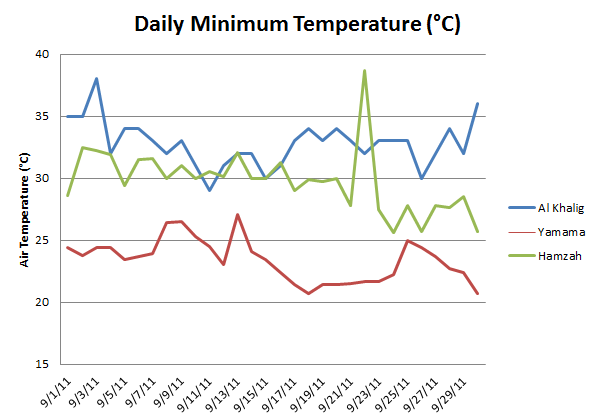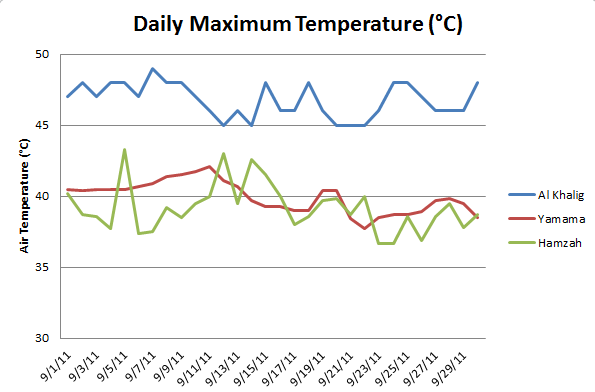September 2011 - Great Global Investigation of Climate
September 2011 GGIC Summary
Welcome, student climate scientists!
September 2011 saw the first official Great Global Investigation of Climate (GGIC) Intensive Observing Period (IOP), in which 357 schools from 39 countries entered approximately 408,700 data points into the GLOBE database. Through this data collection, you can explore your climate and compare it with schools nearby, across the country, or across the world.
In September of 2011, Saudi Arabia was represented by 39 schools that collected air temperature, precipitation and/or soil temperature data. Three of these schools are located in three very different locations: in the eastern part of the country along the Persian Gulf, in the center of the peninsula, and in the western part of the country along the Red Sea. Let's take a look at the differences that this country experienced in September.

The first school, Al-Khalig Secondary School at Dammam (elevation 36.1 m ASL) is located near the western coast of the Persian Gulf. The second school, Yamama Secondary School at Riyadh (elevation 617.4m ASL), is centrally located in the Arabian Peninsula. The third school, Hamzah Bin Abdulmutalib Secondary School at Jeddah (elevation 6.9m ASL), is located near the eastern coast of the Red Sea. It is interesting to examine these three locations and see the differences between their observations.
Let's look at the daily minimum temperature first.

What's interesting to see is that the proximity to a water body seemed to help keep nighttime temperatures warmer. Yamama Secondary School located in the central part of the country experiences cooler nighttime temperatures. Keep in mind that we can't say with complete certainty that the difference is due to proximity to water, as Yamama Secondary School is at a much different elevation (617.4m) than the other two sites.
Daily maximum temperature doesn't show the same relationship, as Al-Khalig Seconday School observes greater daytime temperatures. To really understand why this school has greater daytime temperatures, it would be worthwhile to study the atmospheric circulation to observe its patterns over a time period longer than one month.

The first GGIC during the Student Climate Research Campaign was a great success, thanks to 357 schools in 39 countries. If you didn't participate this time, the GGIC will occur again in December of 2011. We hope to see your data then!





